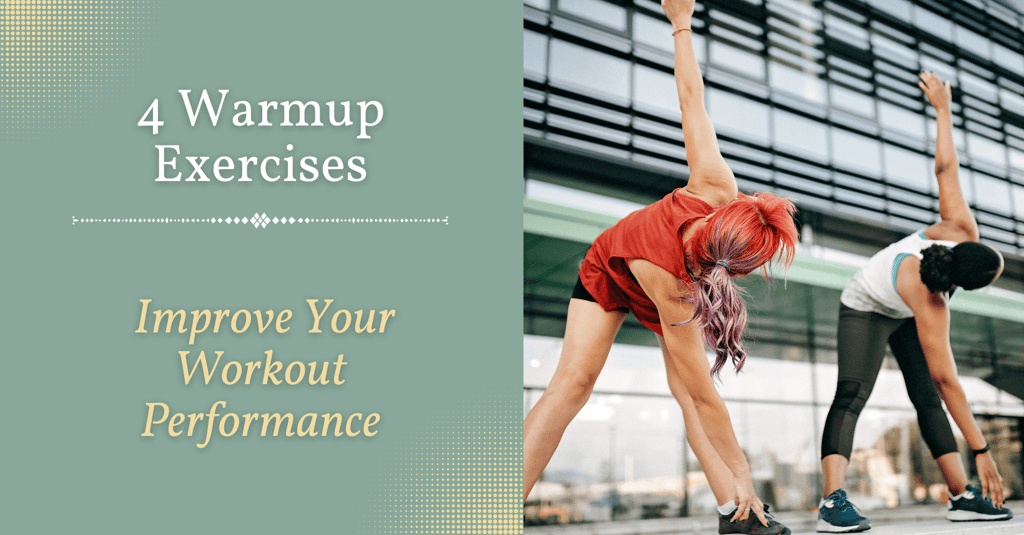4 Warmup Exercises To Improve Your Workout Performance
2/24/20236 min citit


If you have any questions or need some assistance, feel free to submit a comment or send us a message here.
3. Prone Y-handcuffs
The Prone Y-handcuffs exercise isometrically contracts the entire back musculature while externally rotates the shoulders. It’s a valuable exercise for strengthening the rotator cuff muscles, improving shoulder stability, and promoting proper posture. These muscles are often neglected in other exercises and this simple exercise helps to target and strengthen them, reducing the risk of injury in the shoulder.
Additionally, this exercise can improve the overall mobility and flexibility of the shoulder joint, which can enhance performance in other exercises or daily activities.
Benefits of Prone Y-handcuffs:
Strengthening the upper body: Focuses on strengthening the shoulders, arms, and back muscles, making them stronger and more defined.
Improving posture: The prone position encourages good posture and helps to strengthen the muscles that support it, reducing the risk of neck, back and shoulder pain.
Building stability: Requires stability from the core muscles and helps to build overall body control and balance.
Increasing flexibility: The stretching of the shoulder and upper back muscles helps to increase flexibility and mobility.
Improving coordination: Requires coordination of multiple muscle groups, making it an effective way to improve overall body coordination and coordination between the upper and lower body.
How to perform:
Lie face down on a mat or a comfortable surface.
Extend your arms above your head, keeping them shoulder-width apart.
Inhale and slowly lift your arms off the ground keeping them straight.
Bring your arms, in a swimming motion, behind your back, while exhaling slowly, lowering your arms on your lower back until your hands touch.
Bring your arms back to the starting position.
Repeat the movement focusing on keeping your arms and legs straight and your core engaged throughout the exercise.
Benefits of Spiderman with Thoracic Stretch:
Improved mobility: Increases mobility and flexibility in the upper back and thoracic spine, which can help to prevent injury and improve posture.
Increased blood flow: Helps to increase blood flow and warm up the muscles, which can help to improve performance and reduce the risk of injury.
Better posture: Improves posture by stretching the muscles in the upper back and neck, which can help to reduce tension and pain.
Better breathing: Improves breathing by increasing mobility in the ribcage and lungs, which can help with oxygenation and reduce the risk of respiratory problems.
Overall, warming up with Spiderman with thoracic stretch is a great way to improve mobility, flexibility, and posture, while reducing the risk of injury.
How to perform:
Start in a plank position with your core engaged and your back flat.
Bring one leg to the outside of your same elbow, with your foot on the ground, pointed forward.
Extend the opposite arm overhead for a deeper stretch, then bring it back to the floor.
Take your leg back to a plank position
Repeat on the other side.
Benefits of Walkout to Plank Shoulder Tap:
Core strength: Targets the core muscles and helps to build strength in the abdominal and lower back regions. This improves overall stability and balance.
Improved shoulder Stability: This exercise requires balance, coordination and stability in the shoulder region. As you perform the shoulder taps, you are strengthening the rotator cuff muscles, improving your shoulder stability, reducing the risk of injury.
Increased endurance: Increasing your overall endurance level, you’ll be able to perform more exercises, for a longer period of time, without feeling fatigued.
Better balance: The exercise requires you to engage your core and leg muscles, which helps improve your balance and stability.
Better posture: It strengthens the back and core muscles that helps to improve your posture.
Increased flexibility: This exercise requires you to move your body through a full range of motion, which can help increase your flexibility over time.
How to perform:
Start in a standing position with your feet hip-width apart and your arms by your sides.
Bend forward and place your hands on the floor, outside of your feet.
Walk your hands forward until you are in a plank position with your hands shoulder-width apart. Your body should form a straight line from head to heels.
Tap one shoulder with the opposite hand. Keep your core engaged and your body in a straight line.
Repeat the tap on the other shoulder.
Walk your hands back towards your feet and stand up, returning to the starting position.
Repeat this movement for 30 seconds..
Some might think that warming up is not necessary because it’s not building muscle, nor does it burn fat. But a proper warmup does far more than that! It prevents you from injuries and helps to reach your optimal performance during your workout.
Warming up it’s essential because it prepares your mind and body for the main training session: increases blood flow, improves flexibility, and reduces muscle soreness.
Benefits Of A Proper Warmup
Increases blood flow: Helps increase blood flow to the muscles, providing them with the necessary oxygen and nutrients needed for a successful workout.
Prevents injury: Helps to prevent injury by gradually increasing the heart rate and preparing the muscles for the workout ahead. This reduces the risk of strains, pulls, or tears during the workout.
Improves flexibility: Helps to increase the range of motion in the joints and muscles, making it easier to perform exercises with proper form and technique.
Boosts performance: Improves performance by increasing the muscles’ elasticity and preparing the nervous system for the workout ahead.
Reduces muscle soreness: Reduces muscle soreness by increasing blood flow to the muscles and preparing them for the workout ahead.
A proper warm-up is essential for injury prevention and optimal performance during your workout.
4 Quick And Easy Warmup Exercises
1. Spiderman with Thoracic Stretch
The Spiderman with thoracic stretch improves thoracic extension and rotation, and also helps with shoulder mobility. It’s an effective warmup exercise because it stretches out the trail leg hip flexors, front leg hamstrings and your upper back muscles. It also helps to improve mobility and flexibility in the thoracic spine, which improves your posture and reduces the risk of injury.
Note: If you have difficulty lifting both arms and legs off the ground at the same time, start by only lifting your arms or legs. As you get stronger, you can gradually increase the difficulty by lifting both limbs.
Never Skip Warming Up Before Your Workout
Warming up before your workout session is crucial. It prepares your body for physical activity and also creates the body-mind connection, which helps to enhance your concentration and better coordinate your movements.
Implementing these 4 exercises as part of your warmup routine will help you to prevent injuries, increase flexibility, boost blood flow and reduce muscle soreness. Performing these exercises only takes up 5 minutes of your workout session, but will make a tremendous difference to your overall performance.
2. Walkout To Plank Shoulder Tap
Walkout To Plank Shoulder Tap is a full body warmup exercise that focuses on strengthening the core, shoulders,arms, legs and back. It also improves balance and coordination, and increases stability in the shoulders.
Tip: Make sure to keep your core engaged and your body in a straight line throughout the movement to avoid injury. If you find it difficult to balance, start with a modified version of the plank by keeping your knees on the floor.
4. Regular Plank
Plank exercise is a bodyweight exercise that strengthens the core muscles, including the abdominal muscles, obliques, and lower back. The key to performing a proper plank is maintaining proper form, engaging the core, and avoiding arching or sagging in the lower back.
Regular plank exercise is a simple, yet effective way to improve core strength, stability, and overall fitness.
Benefits of a Regular Plank:
Strengthens core muscles: Targets the abdominal muscles, obliques, and lower back, helping to build core strength.
Improves posture: Helps train the muscles that support good posture, which can reduce pain and discomfort in the neck, back, and other areas.
Increases stability: Improves stability and balance by engaging multiple muscle groups, including the legs, arms, and torso.
Increases endurance: Holding a plank for longer periods of time can increase muscular endurance, especially in the core muscles.
Enhances functional fitness: Planking is a functional exercise that trains the muscles used in everyday activities, such as lifting and bending, making daily tasks easier and reducing the risk of injury.
How to perform:
Start on your hands and knees, with your hands shoulder-width apart.
Place your forearms on the ground, shoulder-width apart, with your elbows directly under your shoulders.
Straighten your legs and raise your body off the ground, so that you are supported only by your forearms and toes.
Engage your core muscles by tightening your abdominal muscles and glutes.
Keep your body in a straight line, avoiding any sagging in the lower back or arching in the spine.
Hold the position for the desired amount of time, typically starting at 10-30 seconds and gradually increasing as you get stronger.
To finish, lower your knees to the ground.
Note: It’s important to maintain proper form throughout the exercise, engaging the core and avoiding any movements that could strain the lower back. As you get stronger, you can try holding the plank for longer periods of time or incorporating other variations.
